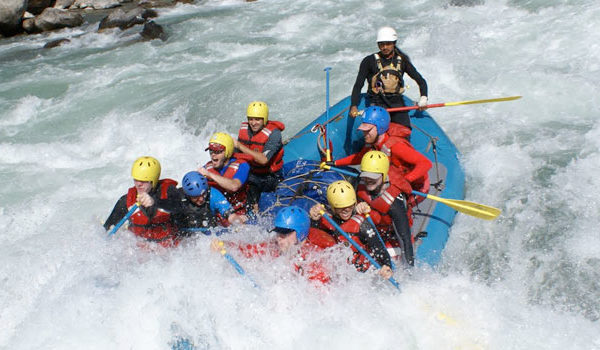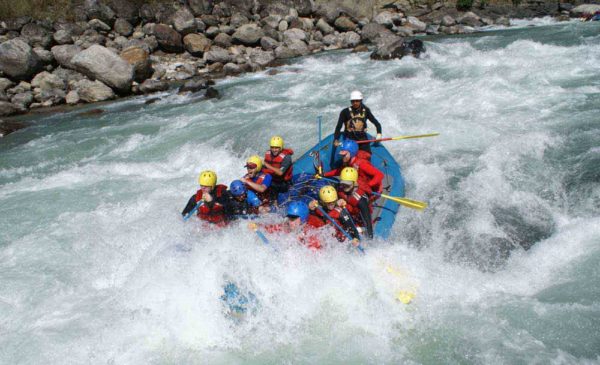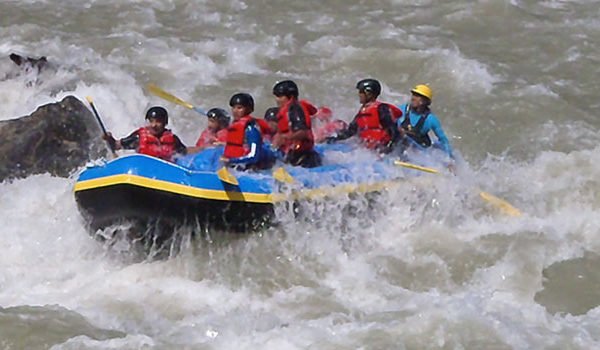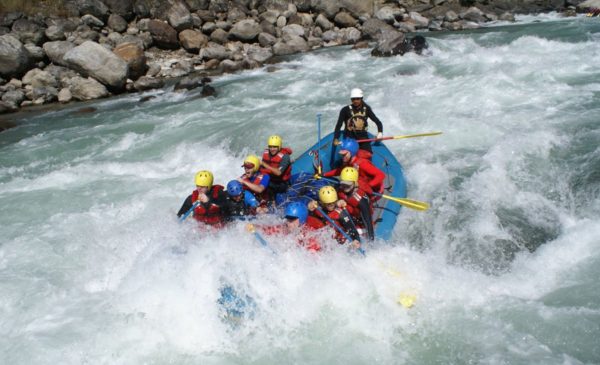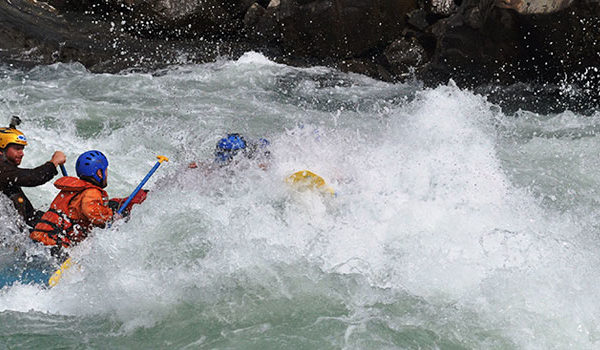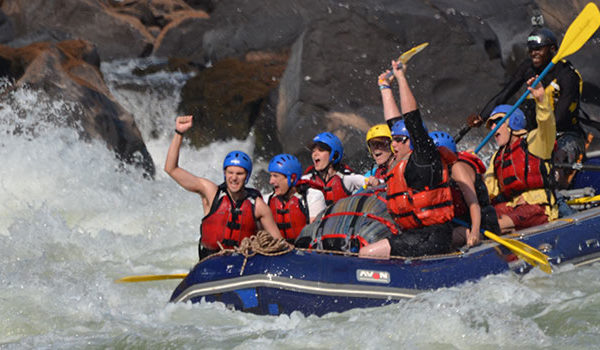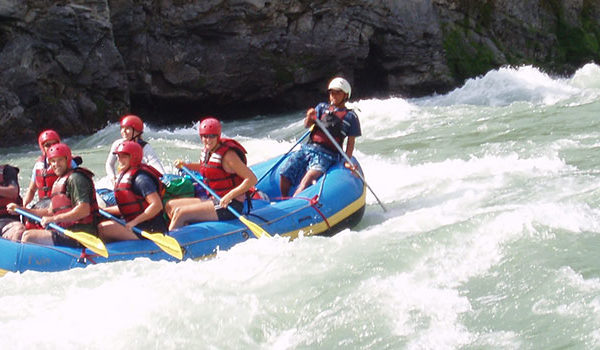Sun Koshi means “River of gold “ perhaps named after the gold that is sometimes panned from the river gravels or alternatively it refers to the orange colour of the water in the monsoon when it is thick with alluvial silt.
The Sun Koshi flows from the Himalaya to eastwards in Nepal through the great valley between the Mahabharat Lekh Mountains. It forms the watershed for most of eastern Nepal and gathering strength from tributaries draining the highest mountains in the world it emerges onto the northern plains of India where it joins the Ganges.
Rafting trips start right here from Dolalghat. Since the Banepa-Bardibas highway is now in operation. It is possible to arrange a trip from Dumjabesi. One of the nice things about the Sun Koshi is with the exception of a few big rapids like Harkapur the general standard of the river gets progressively harder as you descend it.
So there is time to loosen up and practice your skills on easy water before you reach the more interesting bigger and more challenging rapids lower down the river. You will be pleasantly surprised and flattered by how much your skills improve by the end of the trip.

